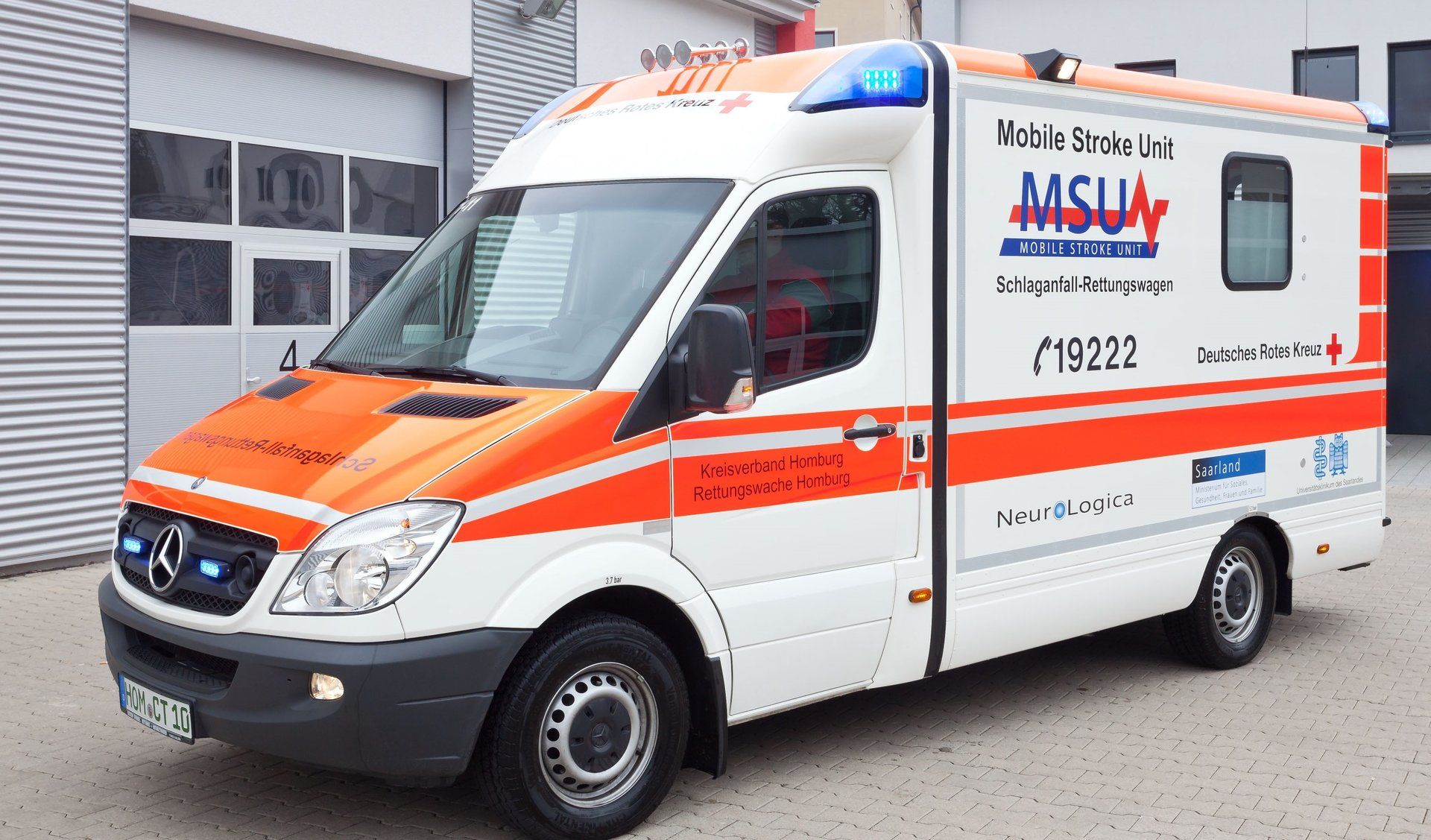
THE RIGHT TREATMENT AT THE RIGHT TIME TO THE RIGHT PATIENT
What is INTAS?
Intelligent Ambulance Solutions GmbH (INTAS) is an organization headquartered in Homburg, Germany led by Prof. Dr. Klaus Fassbender.
INTAS aims to disseminate use of intelligent ambulance solutions, in order to enable more than a minority of patients to obtain advanced emergency treatment. INTAS also supports research to improve prehospital diagnosis and treatment.
INTAS in Action: MSUs for Triage
What is a Mobile Stroke Unit?
The latest in medical technology, a Mobile Stroke Unit (MSU), is an ambulance that, in addition to standard ambulance equipment, contains a CT scanner, laboratory and telemedicine capabilities. With this advance technology, high end multi-modal imaging at the emergency site becomes possible. By telemedicine data from CT scans and real-time videos of patients can be transferred to the clinic (importing the images to the picture archiving and communication system of the hospital). Stroke-specific laboratory tests (platelet, erythrocyte, and leukocyte counts, hemoglobin, hematocrit, INR, PTT, γ-GT, p-amylase, creatinine, glucose, and many more) can immediately be performed by the onboard point-of-care laboratory.
Previous studies document a wide range of novel medical options:
- Thrombolysis at the emergency site
- Diagnosis-based triage decisions with regard to the target hospital, e.g., a more distant hospital with endovascular treatment options versus a closer hospital without specialized options
- Prehospital clarification of the need to transfer the patient to a hospital with neurosurgical expertise (e.g., patients with hemorrhagic stroke and traumatic brain injury)
- Etiology-specific prehospital treatment of blood pressure that is different in ischemic or hemorrhagic stroke
- Prehospital antagonism of the effects of warfarin and novel anticoagulants
What does INTAS offer?

Provision of complete Mobile Stroke Units (MSUs)
Because of our long-term collaboration with a leading ambulance construction company in Germany, we can provide the most advanced custom-tailored MSUs at the best possible price.

Customer-tailored scenario training
INTAS offers a training of all members of the stroke rescue chain: Paramedics, physicians, nurses, technicians and EMS dispatch center personnel.

Support in establishing MSU configurations and workflows
INTAS offers support in generating pathways and standard operating procedures. INTAS assists your group in identifying the best possible algorithm for dispatch, the best staffing scenario and catchment area.

Prehospital research results made available to stakeholders in health care
Our scientific background allows us to share our experience with health care decision-makers and business partners.

Conceptual solutions that meet your specific needs
Based on our lengthy experience, INTAS offers analysis and counselling before establishment of prehospital stroke treatment in your EMS environment.
CONTACT US
Do you have a question? We are here for you! Send us a message and we will get back to you.



